- Administrator
- Albums and Singles
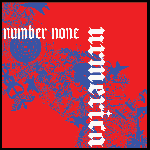 Its not polite to kick someone when they’re down but sometimes certain things need to be put out there and while Urmericaisn’t totally explicit in its outright disgust with the current stateof affairs in the US, it certainly intimates a fair level of defeat andbetrayal.
Its not polite to kick someone when they’re down but sometimes certain things need to be put out there and while Urmericaisn’t totally explicit in its outright disgust with the current stateof affairs in the US, it certainly intimates a fair level of defeat andbetrayal.Rebis
Having made hours of eclectically styled recordings in the wake ofBush’s second election win Chris Miller and Jeremy Bushnell havewhittled this outpouring down into this six-track audio essay. Subtlydocumenting their discontent on “Suggestion for a New National Anthem,”they manage to sum up the huge international sigh / ‘how the fuck’ thathappened the morning after. Beginning with a single drone that couldwell be born of the first note of “The Star Spangled Banner” rippedfrom its moorings leads into a sombre piece which speaks volumes aboutsomething lost. The Eno-esque melody of three notes begins to wear awayslowly under the static of some messed up Basinski loops wearing outthe song’s already defeated vibe into an ending of frayed nerves.
The range of music that Number None touch upon here is a lesson tothe majority of the burgeoning noise drone pack and almost as inspiringas the quality of the material. Number None turn their hand to themanipulation of field recordings with “Pacific Metals I” which matchesradio transmissions with power hums and dock loading effects creatingan atmosphere of intense industrial isolation. “Secret Handshake,Hidden hand”s slithering static insinuations give way to thethreatening irradiating percussion of “Compression and Radiation” butit’s the layering of lost whispered secrets on “Dent Magic” that brings“Urmerica” to its peak.
The insomniatic distant vocal line prayer manages to avoid anysentiments of fervency or communion. It just sounds lost. They evenmanage to resurrect the already zombified Throbbing Gristle with theCarter / Christopherson pulse of final track closer “Monster Lobe(Werewolf Corps Victory Theme).” Number None are pushing forwards andoutwards with purpose.
samples:
Read More
- Administrator
- Albums and Singles
 Composed of spacious flute tones and the buzz of unseen action, the central 38 minute piece achieves what Mirror always seems to be aiming for: the frozen beauty of a moment.
Composed of spacious flute tones and the buzz of unseen action, the central 38 minute piece achieves what Mirror always seems to be aiming for: the frozen beauty of a moment.
Andrew Chalk and Christoph Heemann are the core of Mirror, surrounding them for this performance are David Keenan (author of England's Hidden Reverse), Gavin Laird, and Alex Neilson (seen drumming for The One Ensemble of Daniel Padden and Jandek). Viking Burial for a French Car is Mirror's strangest title yet, a departure from their usually ambivalent or strongly symbolic titles that have always blended very well with their music. The mood on this record, however, betrays the title and, as usual, swirls in a mass of ascending and descending sections. It sounds like a storm of rattles and whines plowing over an old Japanese pavilion, hunting for a lonely and scared man caught inside. The splashes and sudden explosions of metallic and percussive weight can be nothing less than a pounding at the doors of this pavillion, the work of an Oni fulfilling his duty as a hunter of all things evil.
More than any other Mirror album that comes to mind, Viking Burial emulates movement without admitting of any distinct section. There can be no movement in the piece because there is no sudden change, no radical fluctuation except in volume and intensity. No part moves into another, rather every sound seems to evolve from and admit to influence from prior sounds, from the sounds that begin the entire piece. The result is a perfect stasis where pure tonal beauty is captured accurately. All things will age and decay and, in some ways, art is the preservation of beauty or whatever topic is desired by way of freezing the topic in a certain place, in a pleasing location that suits some ideal.
In this case tension and apprehension are frozen beautifully, caught in their hovering, unrevealed power. No monster is ever seen, the Oni never tears down the wall of the pavilion, but the fear of death and the pathetic cries for mercy that must be cried in any severe crisis are bled from every surface Mirror pulls out of their equipment. As feet flop across a tiled floor and the flutes detune into distant sirens there is a distinct impression that the end is waiting just over the horizon. There is a faint red glow slowly expanding through the sky and its progress marks an abhorrent event, but it never reveals itself completely. It is only a threat, an unspeakable flash detailing the brevity of what exists and how nothing frozen in time by humankind's work is ever safe from decay and loss.
samples:
- Viking Burial for a French Car (05:00-06:00)
- Viking Burial for a French Car (14:00-15:00)
- Viking Burial for a French Car (21:00-22:00)
Read More
- Administrator
- Albums and Singles
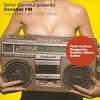 The newest release by Uwe Schmidt’s alter ego Señor Coconut is ahandpicked collection of so called “Legendary Latin Club Tunes.”Schmidt has selected from many styles and genres from across LatinAmerica. However fans of Señor Coconut’s particular brand of Latinisedrock songs will most likely be disappointed.
The newest release by Uwe Schmidt’s alter ego Señor Coconut is ahandpicked collection of so called “Legendary Latin Club Tunes.”Schmidt has selected from many styles and genres from across LatinAmerica. However fans of Señor Coconut’s particular brand of Latinisedrock songs will most likely be disappointed.
This is an awful record.There is little in common with Señor Coconut’s own releases apart fromthe tenuous connection in that there is a Latin element to both in thesame way that Gwar and Neurosis are both metal. Fifteen songs (and tworadio jingles) with zero originality or redeeming qualities. Themajority of these songs sound like the demo on a cheapchildren’s keyboard. (In fact I would expect better of keyboard demos.)The songs all seem to sound the same, more like different versions ofone song rather than a collection of tracks by over a dozen artists.“Gira” by Vanessinhaand Alessandra sounds like Peaches with a far more annoying voice andthis is probably the highlight of the album. Tego Calderon’scontribution “Cambumbo” sounds like reggae on its death bed. Maybe thelanguage barrier means I’m missing out on some choice lyrics but Iremain to be convinced of that.The album’s selling point seems to be that this represents the morealternative side of Latin America’s clubland but in reality it soundsmore like a crass compilation of no name dance artists that would befound in a dodgy souvenir shop in Ibiza. I’ve tried hard to findsomething positive about Coconut FMbut from the tacky cover through to the choice of tracks this is a woeful collection. I was expectingsome element of class and quality control based on Coconut’s ownreleases but alas I was let down on all fronts. This is an album for people who comehome from their vacation with a giant novelty sombrero and a stuffeddonkey. Coconut FM is absolutely appalling and should be avoided.
samples:
Read More
- Administrator
- Albums and Singles
 Rhys Fulber (best known as the number-two man from Frontline Assemblyand Delerium, and as the guy who brought the grindy thrash of FearFactory into the 21st Century by way of industrial breakbeats and synthproduction) may be a better producer thansongwriter and a better engineer than singer, and it just may be thecase that he's got more to offer the world by enhancing the work ofothers than by creating his own.
Rhys Fulber (best known as the number-two man from Frontline Assemblyand Delerium, and as the guy who brought the grindy thrash of FearFactory into the 21st Century by way of industrial breakbeats and synthproduction) may be a better producer thansongwriter and a better engineer than singer, and it just may be thecase that he's got more to offer the world by enhancing the work ofothers than by creating his own.Conjure One is Fulber's latest solo project and enjoying itrequires taking everything I’ve ever known about Fulber and tossing itout the window. In fact, even if I were able to do that, I doubt that Extraordinary Wayswould have more than one track that I would consider dumping into mymp3 player if I just needed to fill it ip.
Fulber has traded in hisindustrial dance and rock cards here and he’s striving for that mostawful of all concoctions: the self-important studio pop record. With ahost of guest vocalists—all female and none as interesting as thepeople he’s managed to rope into working with the barely passableDelerium—the record rolls out a handful of tightly composed andover-produced songs. Every song is so reigned-in that nothing has theemotional resonance or impact that Fulber is no doubt hoping for.Instead, the album offers up a few tracks with passable if notmemorable vocals that will probably be remixed for club play and willprobably go on to be hits with the dancing-not-thinking crowd.
ThatFrontline Assembly or Delerium ever made a splash is a bit confusing tobegin with, as both of those projects were always also-rans to theirmore accomplished, better-known peers. Fulber’s reinvention withConjure One then, might be a more honest reflection of the kind ofmusic he wants to make, but it sounds so manufactured that it eludesany authenticity. The beauty of good pop music is that it’s disposablebut somehow also inescapable. Extraordinary Ways fails to makean impression of any sort and thus becomes the worst kind of popmusic—that which is disposable but also forgettable.
samples:
Read More
- Administrator
- Albums and Singles
 In the period between Haha Sound’s releaseand Tender Buttons, Broadcast have undergone a fair amount of change.Vocalist Trish Keenan and bassist James Cargill are the only remainingmembers, causing them to significantly pare down their sound. Whatremains is a collection of some of the most haunting, minimalistelectronic pop I’ve heard in a good long while.
In the period between Haha Sound’s releaseand Tender Buttons, Broadcast have undergone a fair amount of change.Vocalist Trish Keenan and bassist James Cargill are the only remainingmembers, causing them to significantly pare down their sound. Whatremains is a collection of some of the most haunting, minimalistelectronic pop I’ve heard in a good long while.Warp Records
I always found Broadcast to be a bit too derivative of groupslike Stereolab and St. Etienne. Albums like The Noise Made by Peopleseemed long on retro-kitsch and contained a fair share of killer songs,but it never grabbed my attention the way it did for others. Haha Soundwas a decent attempt at filling out the bands sound, but even then itseemed something was off.
These songs have managed to burn themselves into mymind thanks to their strong hooks and understated experimentation. It is aclear indication to the strides made since Haha Sound.“I Found the F” startsthe album on a glacially understated note with trebly guitars matchedby icicle keyboards, light drumming and the distantly evocative vocalsof Trish Keenan. Single “America’s Boy,” a song that seeminglycelebrates and investigates the mystique of American Imperialism,bubbles over an electric drum and a synthesizer that sounds as if itwere recorded in another room. “Tears in the Typing Pool,” the bandpays homage to the psychedelic folk of The United States of America, aband who’ve always played an important part of Broadcast’s sound.
Though theobvious reference point for many will still remain Stereolab, the fact is that thisrelease culls just as much of its sound from 154-era Wire and early '80spost punks like Young Marble Giants. On “Arc of a Journey,” seeminglyrandom blips and beeps sound out behind Keenan’s singing, which is atonce detached and inviting. As the song slowly begins to swell, a bassline is brought in to anchor the seemingly random electric soundscapestaking place. While people may be worried about the state of the bandfollowing the exit of most of its founding members, Tender Buttonsshould alleviate all those concerns. It is a document of a band pullingthemselves together and releasing an album that is playfullyexperimental, minimal, and strikingly heartfelt.
samples:
Read More
- Administrator
- Albums and Singles
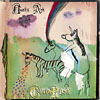 I'm not entirely certain whether CocoRosie should actually be considered a musical group, or just a collection of willful, calculated eccentricities clumsily juxtaposed with each other.
I'm not entirely certain whether CocoRosie should actually be considered a musical group, or just a collection of willful, calculated eccentricities clumsily juxtaposed with each other. The whole existence of CocoRosie represents only the newest in a recent run of decisive victories of style over substance, surface over depth. This sounds like the opening to a very dismissive trashing of the duo's new album Noah's Ark, and perhaps it is, but I also don't want to ignore or downplay the shiny, effervescent superficialities that conspire to create a seductive and undeniably intriguing album (though its intriguing for all the wrong reasons).
CocoRosie are two American sisters who reunited, after a long separation, in Paris; trust-fund babies who caught wind of the freak-folk current typified by Devendra Banhart and the Golden Apples stable. Their first album was a conscious bandwagon-jump, with purposely low-fidelity recordings of the two sisters harmonizing with creepily contrived infantile vocals (a la Joanna Newsom, but without the musical chops), singing along to music-box melodies or clunky programmed rhythms. The Casady sisters appeared in publicity shots in self-consciously retro 1920s European flapper-wear and make-up, looking an awful lot like The Dresden Dolls. Their style has slowly morphed over the past couple years of touring into an almost transcendent form of deliberate tackiness, culminating in the album cover for Noah's Ark, with its crude drawings of unicorns and vomiting zebras gleefully humping under a rainbow projected from a pentagram tattooed on a Care Bear's forehead.
The sisters themselves look terrible, with partial moustaches, mullets, ugly tie-died clothes and clashing Native American jewelry. I'm spending so much time on the visual tactics of CocoRosie because it seems to be at least as, if not more, important than the music itself. This time out, the girls are assisted by French hip-hop beat-boxer Spleen, who provides some clunky, junky, unfunky beats over which the Casady sisters can strain themselves trying to sound like crippled midgets with foetal alcohol syndrome crying for their mothers in a cartoon faerie land. Noah's Ark is the soundtrack to those psychedelic Lisa Frank trapper-keepers that grade-school girls fancied during the My Little Pony-infested 80s. It's studied in its mastery of faux-naive posturing, and in some ways represents a remarkable feat of substance-less, free-floating postmodernity.
Take the album's opening track, "K-Hole," which renders the disassociative experience of Ketamine in nightmarishly jubilant lyrical couplets like: "God will come and wash away/Our tattoos and all the cocaine/And all of the aborted babies/Will turn into little Bambies" and "I dreamt one thousand basketball courts/Nothing holier than sports." I must admit that something inside of me is attracted to such warped surreality, but the song is couched in instantly recognizable Bjork-isms and can't help but seem like a style parody. Other tracks use a similar palette, skeletal melodies and ramshackle beat programming, with vocal multi-tracking and an arsenal of superfluous psychedelic touches, none of it remarkable musically. Several guest stars feature prominently, most notably the recent Mercury Prize winner Antony, who donates vocals to "Beautiful Boyz," a paean to prison sex; and Devendra Banhart, who warbles in Spanish on "Brazilian Sun." Along the way, Diane Cluck, Jana Hunter and some French rapper also make appearances, desperately trying to pad the album with artistic heft, so that no one will notice the undernourished, bulimic 13-year-old girl at the heart of the album. Please, someone feed her and pay attention to her. I can't do it, but somebody really should.
samples:
Read More
- Administrator
- Albums and Singles
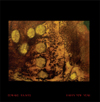 Though I always search in vain for anyindication that the Legendary Pink Dots front man is resting on his laurels, phoning it in,or "taking the piss," as they say, each new release tends to hold to animpressive level of quality control.
Though I always search in vain for anyindication that the Legendary Pink Dots front man is resting on his laurels, phoning it in,or "taking the piss," as they say, each new release tends to hold to animpressive level of quality control.
HappyNew Year is the new chunklet of music-scented sound art from EdwardKa-Spel of The Legendary Pink Dots, and its release represents only oneof a small avalanche of EKS albums to be issued in 2005. Already thisyear has seen the release of O Darkness! O Darkness! and Fragments ofIllumina, and if Beta-Lactam Ring Records sticks to their plans, therecould be as many as three more EKS albums issued this year. The reasonfor this sudden spike in Ka-Spel's already absurd prolificacy couldonly be speculated about, but one thing is for certain: if anyone hasearned the right to unleash a ridiculous amount of vanity albums on theworld, it's Edward Ka-Spel. An argument could be made that Ihave merely fetishized Edward's recording aesthetics and artisticobsessions, and that an objective assessment of his work would beimpossible. Well, fuck all that.
Happy New Year clocks in at about 26minutes, making it more of an EP than a full-length. The recording wasundertaken on New Year's Eve 2004, when the artist found himself insolitude, alienated from the celebrations occurring outside his door.While most of us would probably get drunk and call up an old flame, EKSdecided to record this layered mini-album. In the far distant background of therecording, you can hear the crackling and whistling of fireworksexploding as EKS rifles backwards through his recent memory, producinghazy, backwards washes of analog synthesizer that reek of nostalgia,sadness and regret. Lovely, meandering piano melodies take the fore,picking out deconstructed variations on "Auld Lang Syne" and othercelebratory songs. It's haunting, elegiac and tasteful, never totallysurrendering to melancholy, but gracefully skating around its edges.
"What Goes Around" is the second track, and though it is not part ofthe same New Year's Eve recording session, it is paired with the firsttrack because of its similar insistence on looking backward, on thenebulous play of memory in the mind's eye. It ends with a spooky loopfrom an old-time-y record, running out numbly into oblivion. Theconstruction of both tracks is along the lines of EKS' moreexperimental, dislocated, ambient work, as opposed to the moresong-based structures of classic albums like Khataclamici China Dolland Tanith and the Lion Tree. This is not a bad thing by any means;just a caveat. Though this brief memento of days gone by is barelysubstantial enough to warrant repeated listens, Happy New Year is stillanother terrific little entry in the EKS discography.
samples:
Read More
- Administrator
- Albums and Singles
 Gene and Dean Ween have a huge catalog of unreleased demo tracks, and the Shinola seriesis their way of inflicting them on the rest of the world.
Gene and Dean Ween have a huge catalog of unreleased demo tracks, and the Shinola seriesis their way of inflicting them on the rest of the world. self-released
Since they are currently relying more on rehearsal andpost-production wizardry instead of the raw "so dumb it's smart"enthusiasm that worked before, their albums have lost some of thatspontaneous, giddy fun. Shinola Vol.1 is warmly welcomed for those like me who liketo hear them at their rawest and most creative, resurrecting some of that sloppy, good-old-time gaity. The songs are theusual assortment of Ween offerings: some are repetitive, one-line,shroom-inspired flashbacks to their early years ("Big Fat Fuck" &"Tastes Good On Th' Bun," best suited for the inebriated listener),most of them are well-crafted 1970s genre sendups ("Monique the Freak"features funky, farty keyboards that would make even Funkadelic'sBernie Worrell feel sick to his stomach), and a few are uselesstoss-offs that should never have seen the light of day (see "Israel").
I'm sure these songs were rejected for good reason, as they tend to be abit below Ween par when it comes to lyrics. However, the majority of thematerial on this album is still more catchy and enjoyable than youraverage piece of radio schlock—even the radio schlock that they'reparodying. Most importantly, these songs are fun to listento, just like the old days, and I'm looking forward to all future Shinola installments.
samples:
Read More
- Administrator
- Albums and Singles
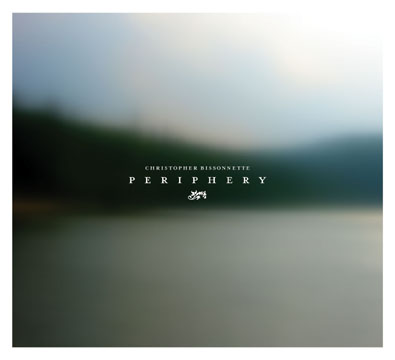 Bissonnette's compositionsburn slowly and coldly, not because the record is particularlyunwelcome nor is it difficult to listen to, but his sound choices areundeniably of the modern age.
Bissonnette's compositionsburn slowly and coldly, not because the record is particularlyunwelcome nor is it difficult to listen to, but his sound choices areundeniably of the modern age.
Thinkbox founder and digital arts renaissance man ChristopherBissonnette has spent a large portion of his career working at theintersection of video, art, music, and performance. Throughout the 90'she worked in a variety of ways with media and art installations and hasproduced compilations and albums with other Thinkbox members.Appropriately his solo debut, Periphery,is a digital flood of an album, arranged as though each sound waslayered together one brush stroke at a time. Where other groups and individuals focustheir editing around an organic sound, Bissonnette is happy to allowhis samples to glow with all the electricity that the term "digital"implies.
Although a piano makes an appearance on "In Accordance," themajority of the album thereafter carries a static tone with it, a tonethat creeps by silently with the otherwise warm caress of liquid drift.At times vaguely hidden sine waves dominate the album, shivering andcaught in the ebb and flow of Bissonnette's gentle tempering. Listeningto "Comfortable Expectations" evokes images of a man, wrappedcompletely in dark cloth, sinking slowly to the ocean's bottom, butthere is no terror or fear of suffocation in the music whatsoever.Instead Bissonnette simply paints, creating whole worlds by lettingambiguity rest easily within the variance of his sound choices. Humsstop being purely electric and instead of recall the slow distortion ofsound created by water and, often times those sine waves morph into theunearthly ring of insects buzzing across infinite green fields. As thealbum progresses it moves into darker and darker territory, becomingmore nocturnal and favoring more intricate samples that waver in theirduration. Each sound becomes more infinite, admitting to more variationand reaching symphonic proportions in tense sputters. The finalportions of the album releases the tension that its middle create andposits a cycle; by the time the music has stopped Bissonnette hasmanaged to create a journey of an album, almost conceptual in itsmassive churning.
Where aquatic themes might be said to dominate thecenter of the album, its outer portions are windswept and bright,inspiring images of an oasis and the surrounding desert or mountainousregions sun drenched and clouded by snow. It's a unique piece in aworld of digital music that can sound so alienating. It's carefullyconsidered and well paced, completely defying its digital birth andutilizing its electric power for human weight and imaginative power.
samples:
Read More
- Administrator
- Albums and Singles
 Greh of Hive Mind and Mike Connelly of Hair Police and Wolf Eyes have released a monster of a record that collects two previously limited cassette releases with a new 38 minute opus dedicated to dysfunctional machinery of all kinds.
Greh of Hive Mind and Mike Connelly of Hair Police and Wolf Eyes have released a monster of a record that collects two previously limited cassette releases with a new 38 minute opus dedicated to dysfunctional machinery of all kinds.
PACrec
The satanic imagery and advertised promise of "black noise" might suggest some seriously raw material, but it's the older releases that really make I Turn Black Keys shine. The title track—and first on the album—is pure distorted madness punished and shaped into various forms. There's not a whole lot on the track that suggests much beyond the standard harsh noise fare: bleeding static, roughed up rhythmic bursts, low-level bass frequencies accentuated by sudden freak punches of sound, and stuttering white noise are all intertwined and thrown about like a rag doll for close to forty minutes. What I've heard from Hive Mind has never suggested a density like this, so it's interesting to hear Greh working in this context. It's certainly not the best thing he's been involved with, but the piece does move by quickly, varying enough to keep the entire track interesting and fun. It's the next four tracks that tickle my fancy, however.
Both "Bane" and "House with the Clock in its Walls" revel in the promise of space and vacancy. Instead of flooding the aural spectrum with gargantuan walls and maniacal bulldozers, Greh and Connelly bounce analogue sounds throughout the stereo, imitating some cosmic comedy that goes severely awry, ending with earth shattering quakes and deep shrieks worthy of death metal's finest moments. These two tracks remind me most of what I liked about Hair Police on "Obedience Cuts." There's no narrative running through the music, just unhinged anger, aggression, and radical twists in style and substance. When the first part of "Bane" ends and electric saws begin cutting through the flesh and muscle of various limbs, the scream that's buried in the mix only serves to intensify the feeling that some snuff film was used in the recording of this song. The second half of "Bane" is even more punishing, the pulverizing jackhammer that forms its non-rhythm evolves into a hypnotic pulse, saturating any sense of bodily involvement and moving the entire piece onto a level of pure mental stress. "House with the Clock in its Walls" ends the disc on a very high note. The beautifully vast array of strange noises that occupy this two-part orgy shame many noise recording artists and cast Gate to Gate in an entirely new light.
While much of the disc might seem a dedication to Satan and his majestic ability to destroy, the final moments of I Turn Black Keys is somehow soothing. Not that I'd ever sleep to the record, but after nearly 60 minutes of pure, rich, black vomit, this sounds absolutely spaced out and almost peaceful. Psychedelic animation might be the single greatest strength in noise's arsenal and that strength is especially demonstrated here.
samples:
Read More
- Administrator
- Albums and Singles
 Adding to my theory that producers shouldn't write and release records of their own is this gem of an "ethnic" electronic record. Scott Solter is a name some might identify with Spoon, Court and Spark, or Tarentel, but don't let their better records fools you: The Brief Light is a mess of an album with few strengths to speak of.
Adding to my theory that producers shouldn't write and release records of their own is this gem of an "ethnic" electronic record. Scott Solter is a name some might identify with Spoon, Court and Spark, or Tarentel, but don't let their better records fools you: The Brief Light is a mess of an album with few strengths to speak of.In order to be clear, I should re-emphasize how much I hate records that try to sound "ethnic," like they were born and raised in Malaysia or Africa and obviously have enough knowledge to write an album that fuses the musical styles from those regions with our own. In fact, most of these people have probably only heard a Deep Forest record or two and think they can get away with stealing their ideas and reformatting them. Solter, on the other hand, thinks that a mindlessly arranged record of exotic instruments is enough to carry an album without sinking it beneath the weight of its own fraudulence. There's more dub music in The Brief Light than anything else, but instead of emphasizing the bass all the time, Solter adds keyboard flourishes and guitar rolls worthy of the worst new age compilations featuring John Tesh and Yanni.
The sounds are all amazingly well mixed and produced, vibrantly clear and astoundingly rich, it's just that their arrangement sucks and the mood they create reminds me more of an exhibit at a cheap zoo than of a rain forest or an exotic locale filled with strange sounds and music. John Lomax might've spoiled me with his field recordings and a string of "world" albums released in field recording format (that is, the album really is a recording of natives performing their distinct music) opened my eyes to how exotic music can be, so fodder like this just upsets me and reminds me that there are still hippies out there obsessed with chilling out to the latest wank from some guys who think wooden drums are cool and that Casio keyboards sound great with them.
There are a few bands that have successfully used ethnic music to their advantage and made something beautiful with it (go check out Black Ox Orkestar and their klezmer music for an example of how to do it right), but Solter has only reinforced my belief that it's just about impossible to do without sounding cheesy. I do, however, like the way the album was packaged. It's the same price as any jewel case release but it's housed in a very pretty weave that unfolds to reveal the track listing and individuals involved in the making of the record. If only the group had a coherent idea of what to do with their exotic sound palette, then maybe the music would have been as quality as the packaging and I could stop getting angry over people raping the idea of "exotic" and "ethnic" music.
samples:
Read More

